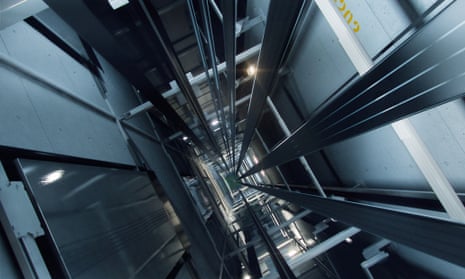Leading Lift Companies in London: Delivering Exceptional Service and Support
Leading Lift Companies in London: Delivering Exceptional Service and Support
Blog Article
Digging Into the World of Lifts: Typical Issues Faced by Numerous Lift Systems
As we browse via the vertical transportation systems of modern structures, lifts stand out as an important part of our daily lives. From hydraulic lifts to grip systems and machine-room-less designs, each lift kind comes with its collection of common problems.
Hydraulic Lifts
Hydraulic elevators, commonly preferred for low-rise buildings, use fluid stress to control the motion of the lift car (lift repair companies). This device involves a hydraulic pump pressing oil right into a cyndrical tube, causing the elevator to relocate the wanted instructions. While hydraulic elevators are known for their silent and smooth procedure, they do come with their own set of typical problems
One widespread trouble with hydraulic lifts is oil leak. Furthermore, problems with the control system, such as malfunctioning shutoffs or a malfunctioning pump, can trigger interruptions in the elevator's movement.
Regular maintenance and punctual fixings are necessary to ensure the smooth performance of hydraulic lifts. By attending to these typical problems proactively, building proprietors can decrease downtime and make certain the security and effectiveness of their vertical transport system.
Grip Lifts
When thinking about vertical transport systems in structures, one more common kind apart from hydraulic elevators is the grip lift. Traction lifts run using a system of ropes and counterweights that relocate the elevator car by clutching onto the hoist ropes. This system enables for smoother and faster upright transportation contrasted to hydraulic systems.
Among the common concerns dealt with by traction lifts is rope wear. The continuous activity of the ropes within the grip system can lead to tear and use over time, possibly causing the lift to malfunction or become dangerous for use. Normal assessments and maintenance of the ropes are vital to guarantee the lift's appropriate performance and security.
An additional problem that grip elevators might encounter is associated with the control system. Problems with the control system can cause issues such as unpredictable movement, delays in feedback times, or even full shutdowns. Routine screening and maintenance of the control system are vital to stop such problems and ensure the elevator's integrity.
Machine-Room-Less (MRL) Lifts

One of the key parts of MRL elevators is the compact gearless grip maker that is set up within the hoistway. This machine successfully drives the lift automobile without the need for cumbersome devices found in traditional grip elevators. In addition, MRL lifts generally use a weight system to balance the auto, additional enhancing their power effectiveness.
In spite of their benefits, MRL elevators may encounter difficulties associated with maintenance and repair service due to the restricted room for equipment setup. Accessibility for servicing elements within the shaft can be restricted, calling for specialized training for specialists. Correct maintenance routines and routine inspections are important to make certain the continued smooth operation of MRL lifts.
Overloading and Weight Restriction Issues
Are elevators geared up to manage excess weight lots efficiently and safely? Overwhelming and weight restriction concerns are critical issues in lift procedures. Lift suppliers design lifts with particular weight capabilities to guarantee traveler safety and security and tools longevity. Surpassing these weight restrictions can bring about different problems, including mechanical failures, delays, and safety and security risks.
When elevators are overwhelmed, it puts too much strain on the motor, cable televisions, and other components, potentially creating malfunctions or malfunctions. If they find excess weight, security mechanisms such as sensing units and overload sensing units are in location to prevent lifts from relocating. Additionally, exceeding weight restrictions can cause enhanced power usage and wear and tear on the lift system.
To alleviate overloading concerns, developing managers need to prominently present weight limitations in elevators and enlighten residents on the importance of sticking to these lift repair near me restrictions - lift repair companies. Normal maintenance checks by certified service technicians can also aid guarantee that lifts are operating within secure weight parameters. By resolving overloading and weight limitation concerns proactively, building proprietors can enhance lift safety and effectiveness
Electric System Failures
Exceeding weight limits in elevators can not only lead to mechanical problems however likewise possibly add to electric system failures within the lift facilities. Electric system failures are an important problem in lift procedure, as they can trigger unforeseen closures, malfunctions, or even security risks.
Furthermore, power surges or changes in the electrical supply can also disrupt the lift's procedure, influencing its efficiency and security. These electrical disturbances can harm delicate lift parts such as control panels, circuit boards, or sensors, leading to system failings. Routine maintenance and evaluations are essential disabled platform lifts prices uk to identify and address possible electric issues promptly, making certain the safe and reliable operation of lift systems. By adhering to weight restrictions and carrying out routine electric system checks, structure owners can minimize the danger of electrical failings in elevators.
Conclusion

Hydraulic elevators, frequently preferred for low-rise structures, make use of fluid stress to control the activity of the elevator vehicle.When taking into consideration upright transportation systems in structures, another usual type apart from hydraulic elevators is the grip elevator. Grip elevators run utilizing a system of ropes and counterweights that relocate the elevator cars and truck by gripping onto the hoist ropes. lift companies in London Unlike typical elevators that call for a separate equipment space to house the tools, MRL elevators incorporate most of the elements within the shaft, eliminating the requirement for a dedicated maker space.In final thought, lifts face typical issues such as hydraulic malfunctions, grip system failures, and electrical system troubles.
Report this page